





The Surrealism Website
Kay Sage (1898 - 1963)
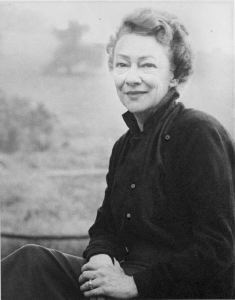 Kay Sage came from a wealthy american family and in 1937 she moved to Paris intending to establish herself as an artist. She became inspired by Surrealism and got to know Yves Tanguy. Andre Breton was unhappy that she was from a wealthy background and his negative attitude towards her led to a break with Tanguy with whom he had been very close since the mid 20s.
Kay Sage came from a wealthy american family and in 1937 she moved to Paris intending to establish herself as an artist. She became inspired by Surrealism and got to know Yves Tanguy. Andre Breton was unhappy that she was from a wealthy background and his negative attitude towards her led to a break with Tanguy with whom he had been very close since the mid 20s.
Sage was very attracted by the work of De Chirico and this influenced her early works from the late 1930's as with Monolith of 1937 and My Room has Two Doors of 1939.
Her paintings only rarely show human figures and these are usually wrapped or enveloped in cloth. Thus we see the Fourteen Daggers of 1942 with two wrapped figures set in De Chirico metaphysical space and Shivering Mountain of 1943 has another wrapped figure.
As with her husband, Yves Tanguy, she was drawn to depicting remote landscapes with a far horizon devoid of human figures. However, so did use a rather different pictorial language from him. While he filled his landscapes with polished rounded pebble like organic forms, Kay Sage showed strange architectural constructions, some of soft flowing cloth and others of harder materials. A good example of this is her 1944 painting In the Third Sleep. As with Tanguy her titles are enigmatic and do not seem to give much insight into the structure of the painting.
In the 1950s her work often depicts architectural elements as with No Passing and perhaps the best known painting of hers, Tomorrow is Never.
In 1956 she relented somewhat from not depicting human figures in her remote landscapes in another painting for which she is usually known, Le Passage. Her husband had died in 1955 and some commentators have read into this painting an autobiographical element, viewing it as herself gazing into emptiness. The title can be translated as the 'passing' referring to the death of her husband, and perhaps that is why the title is in French. Whether or not this is a valid reading of Le Passage Kay Sage was so deeply affected by his death that she almost completely abandoned painting.
A further late piece is her 1958 painting The answer is no. Here she depicts a mass of frames and blank rectangular shapes, which it is easy to read as a crowded mass of blank canvasses and stretchers, paintings that would never be. In her diary entry for August 1961 she wrote, "I have said all that I have to say. There is nothing left for me to do but scream." Sadly she took her own life in 1963.
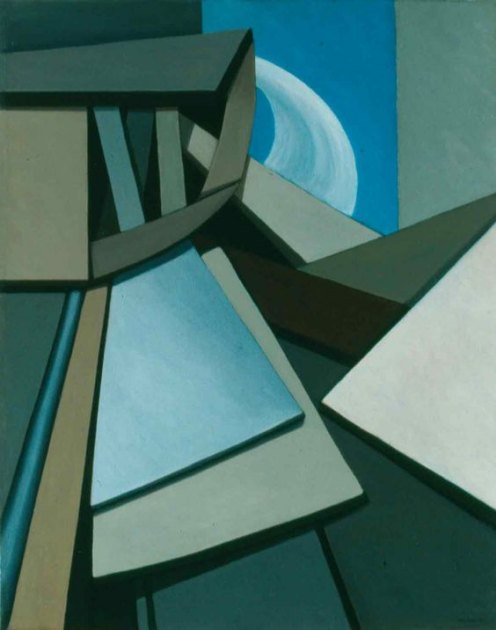
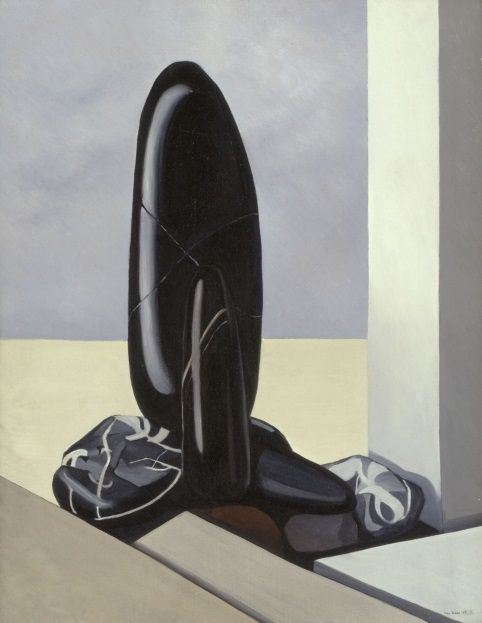
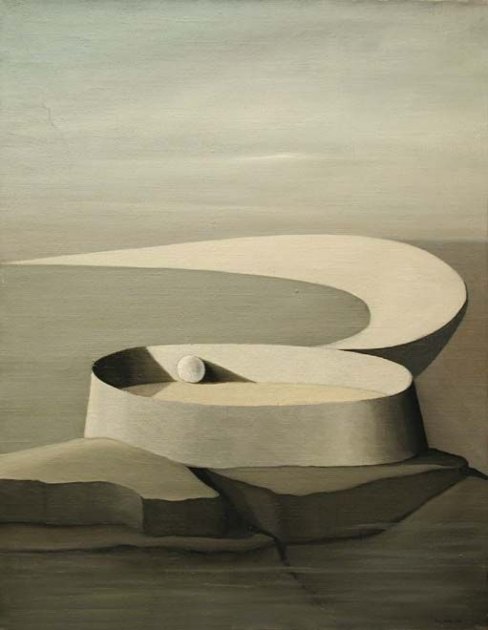
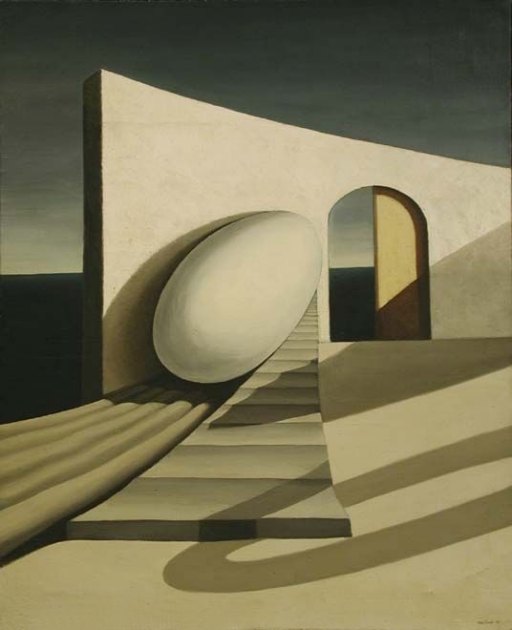
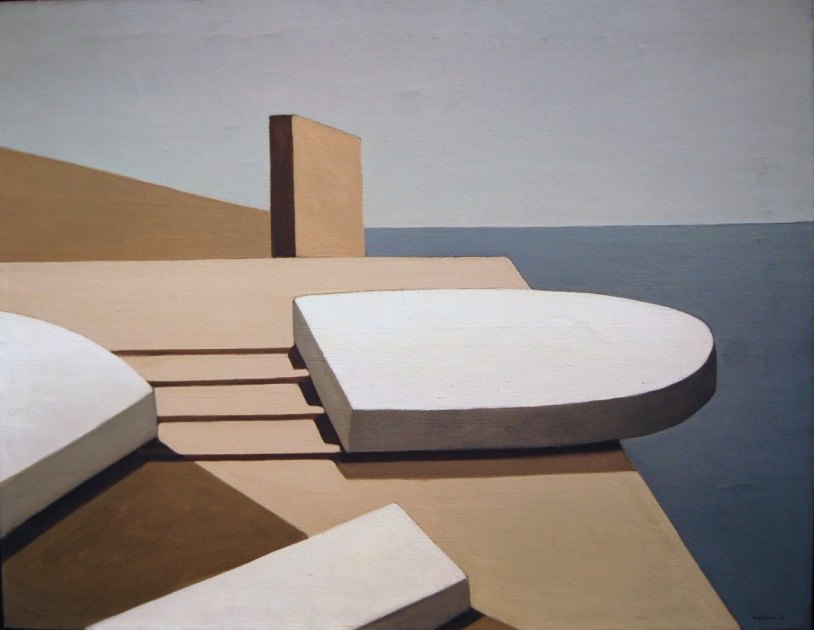
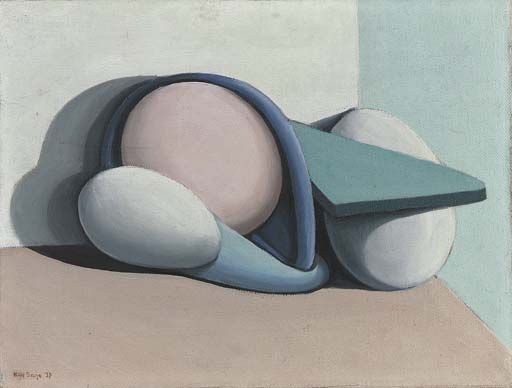
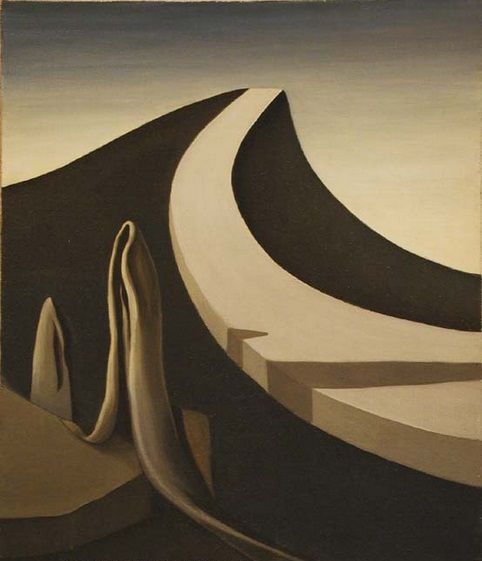
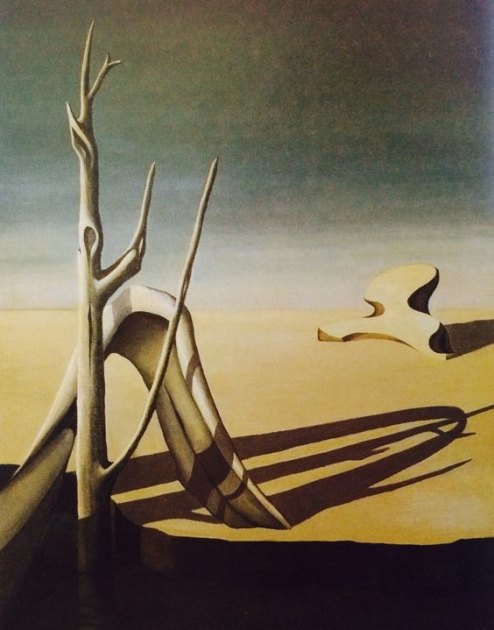

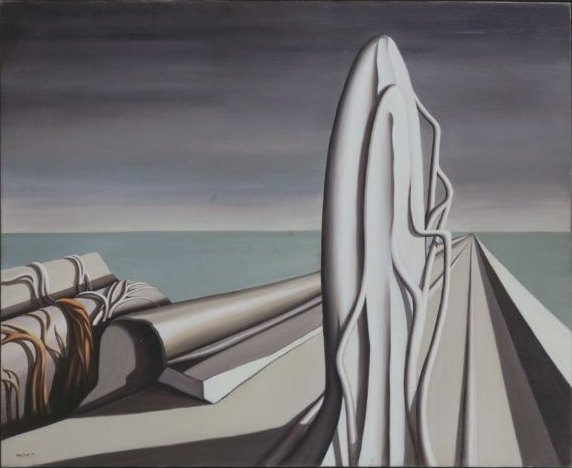
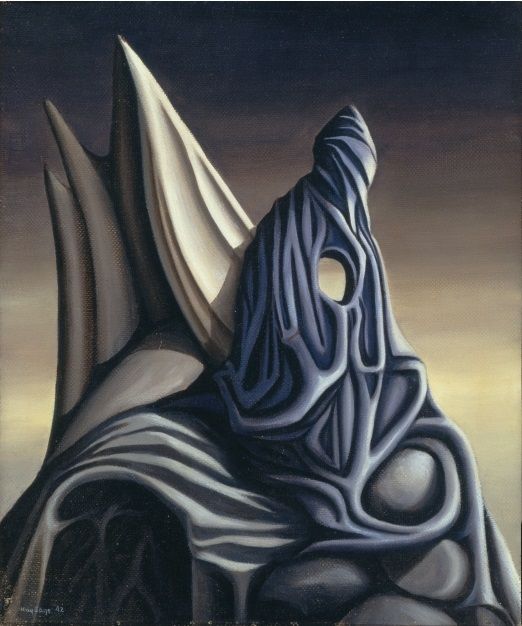
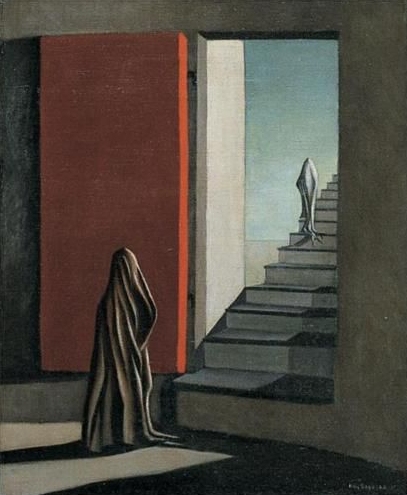
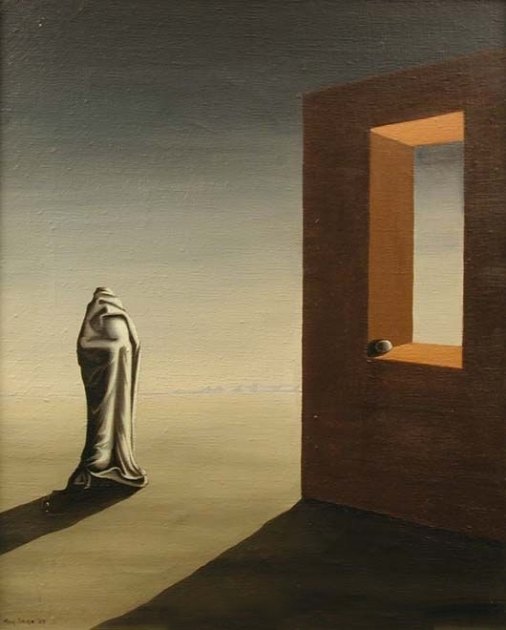
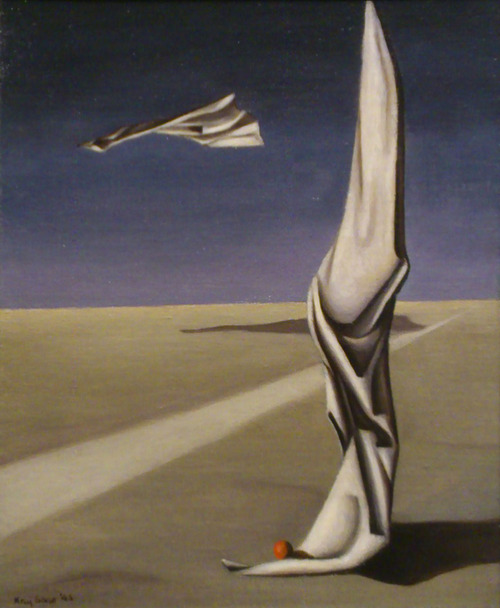
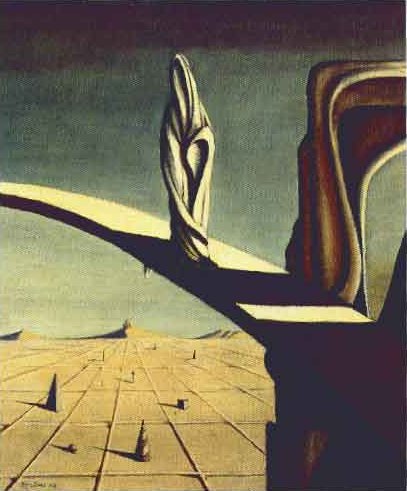
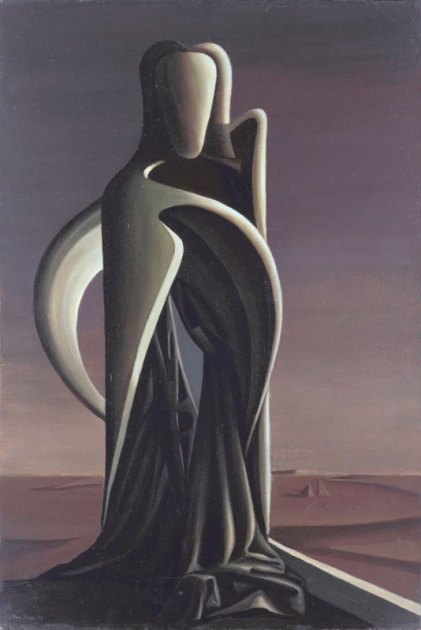
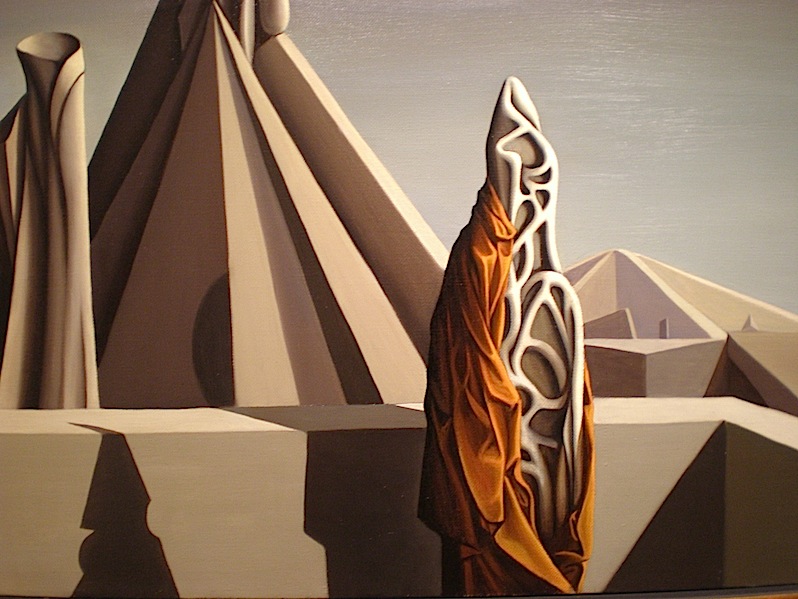
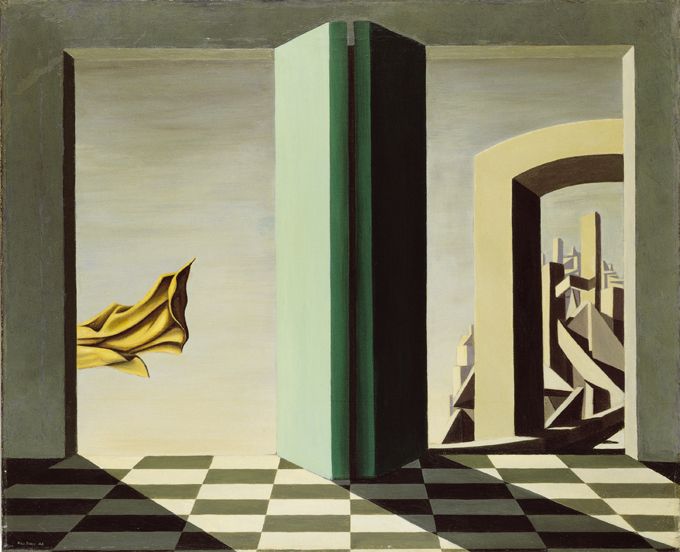
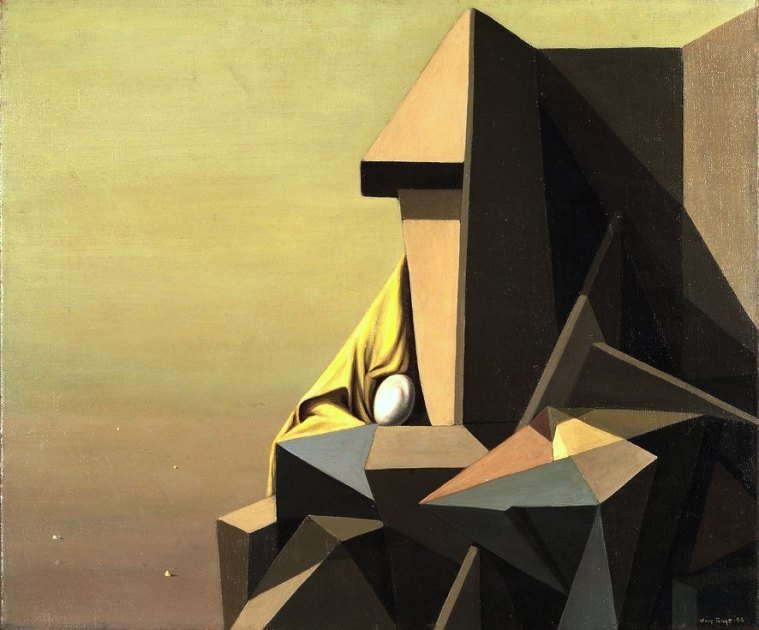
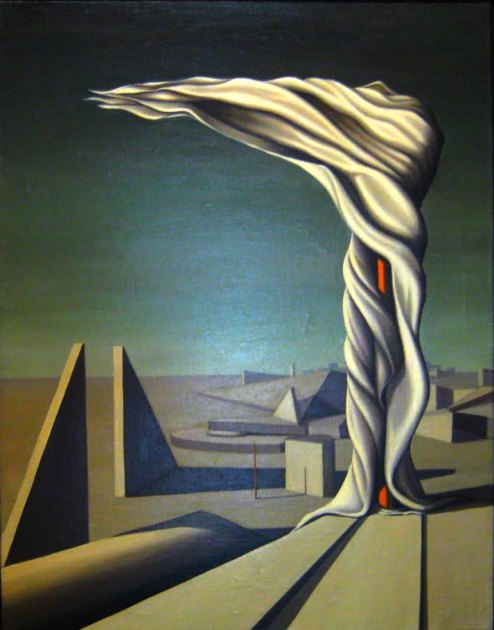
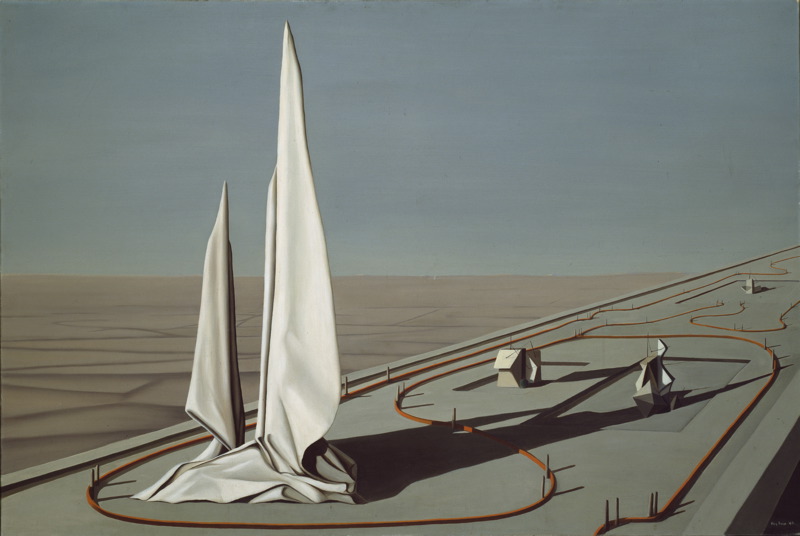
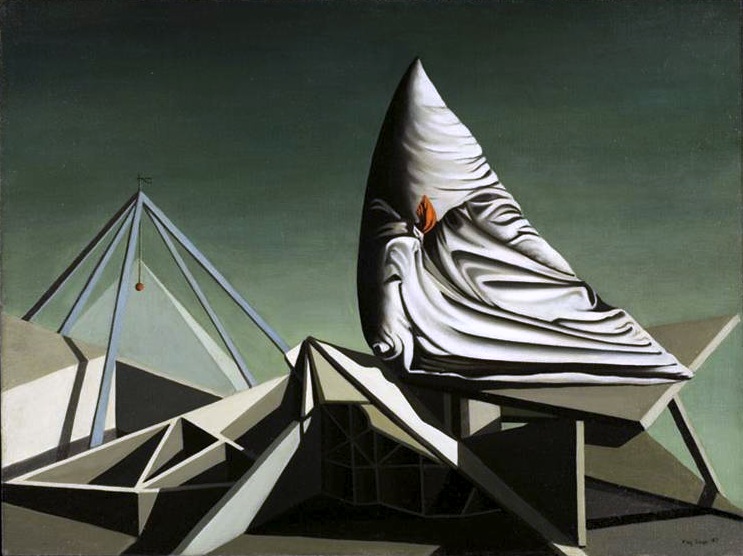
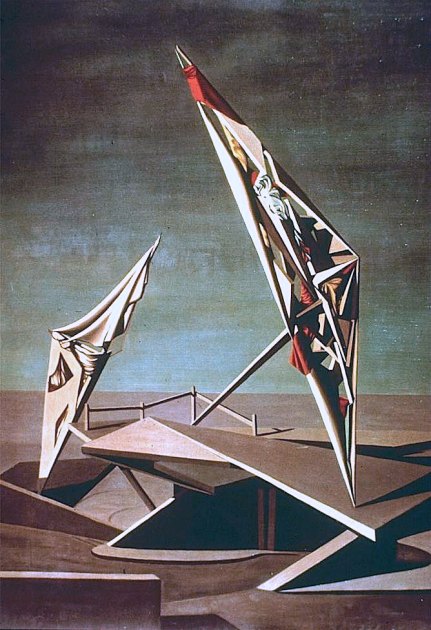
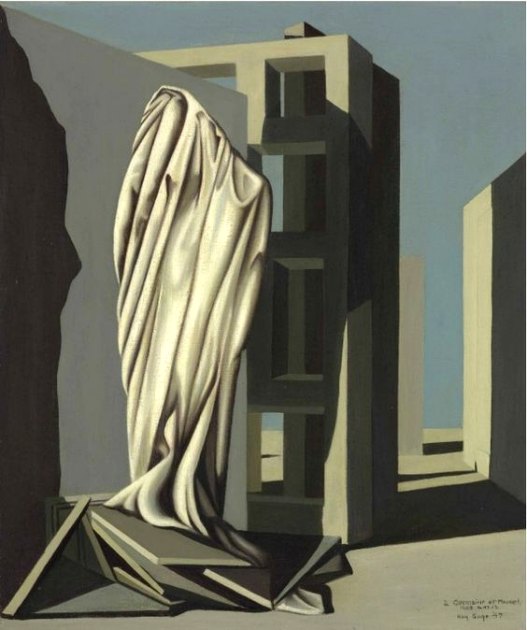
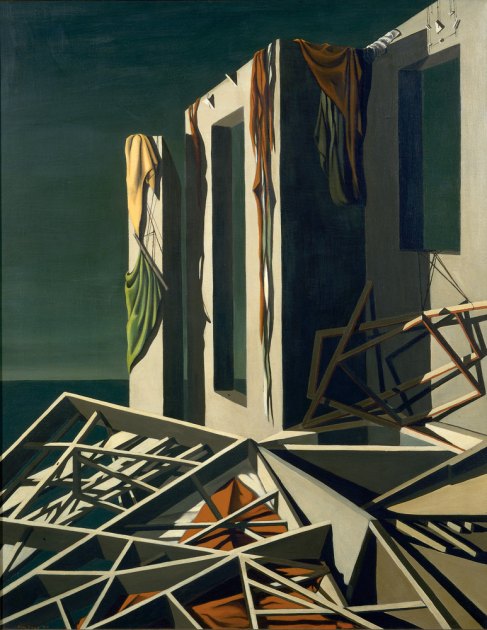

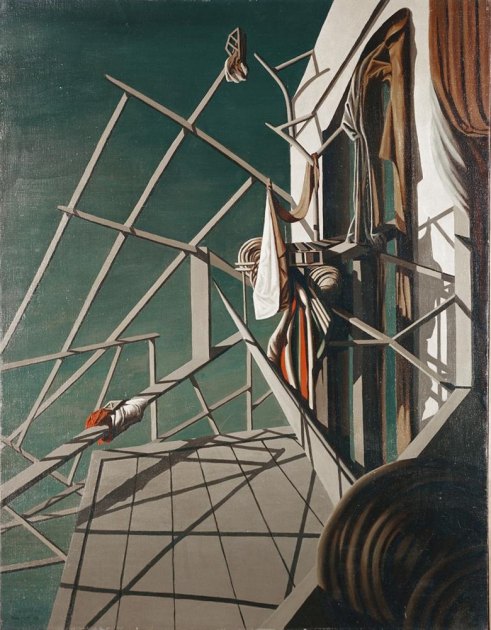
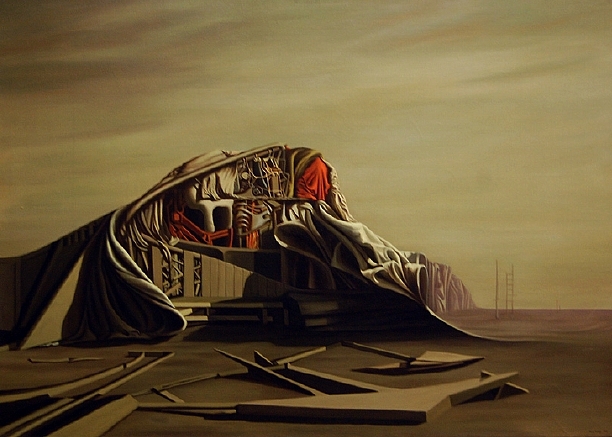
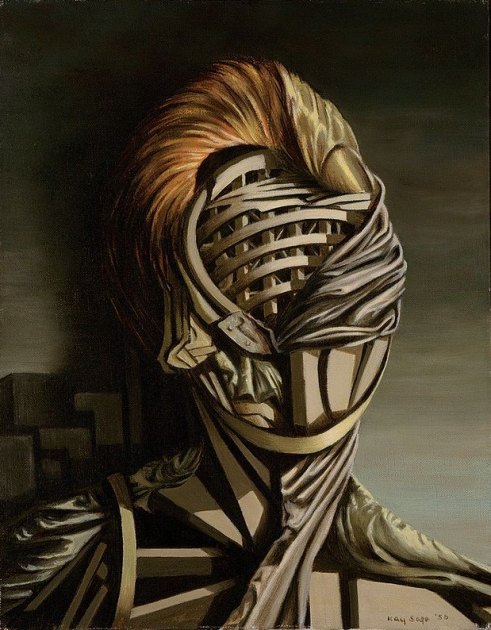
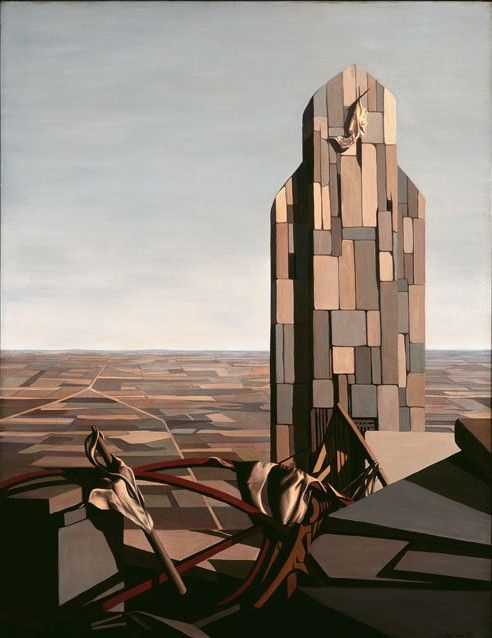
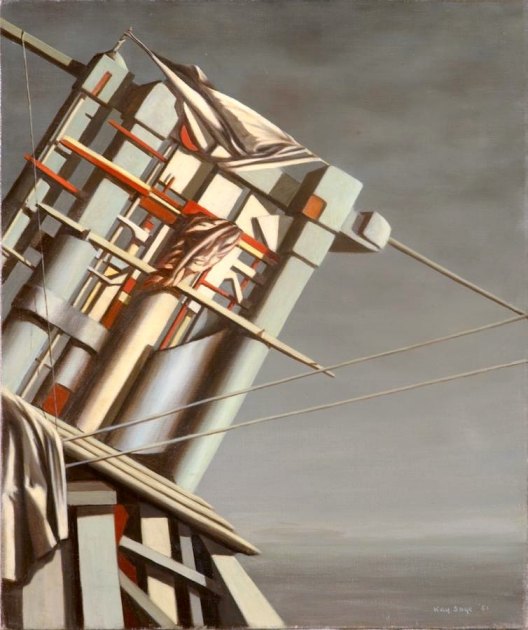
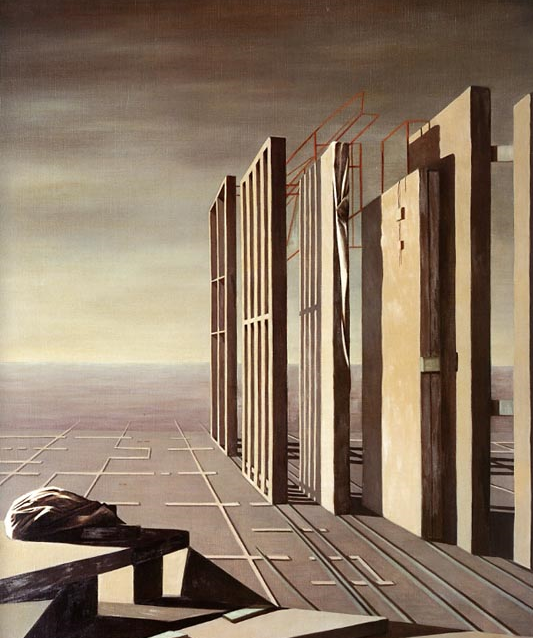
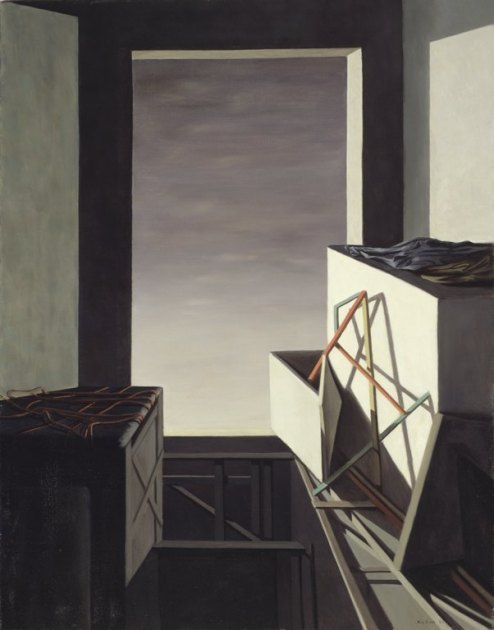
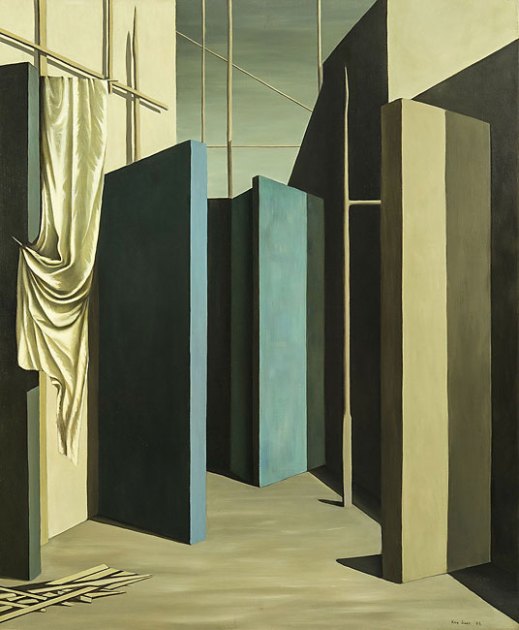
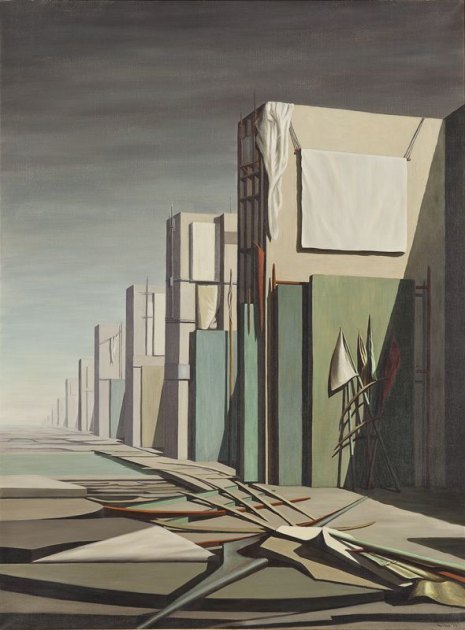
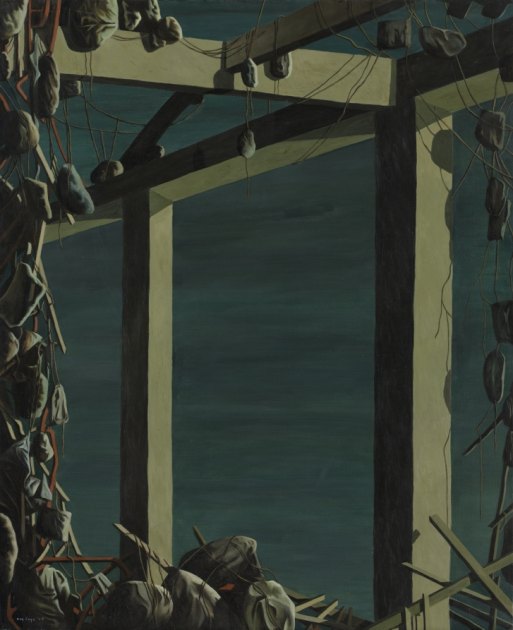
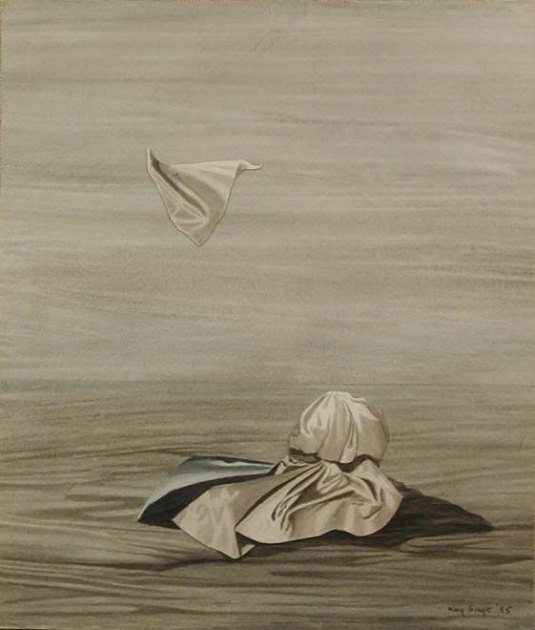
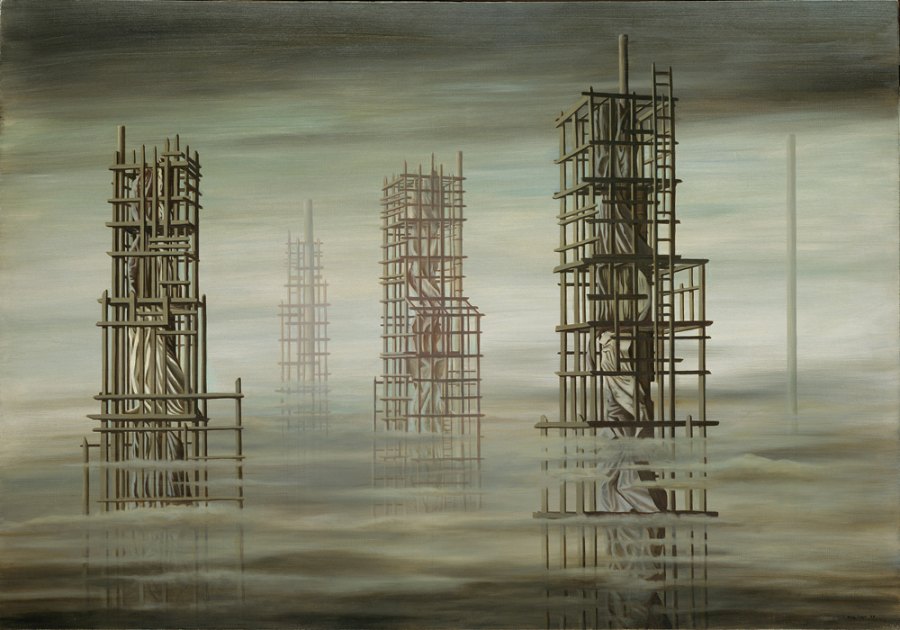
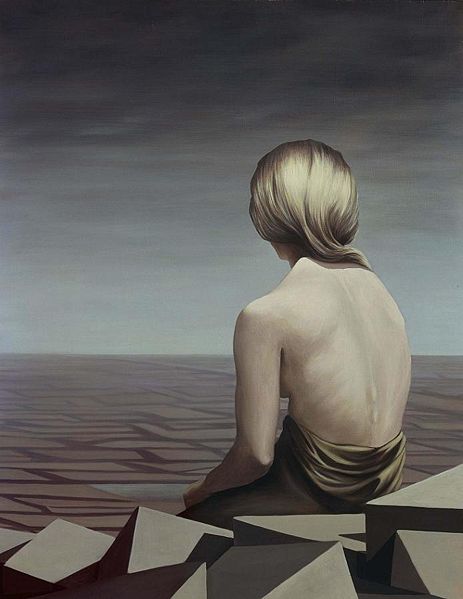
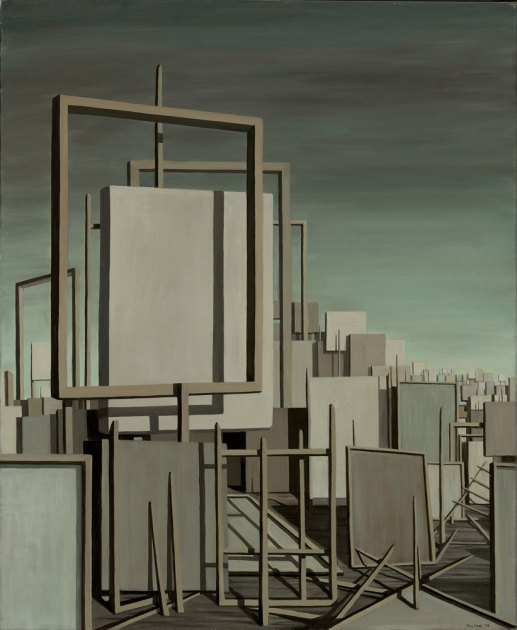














































 Kay Sage came from a wealthy american family and in 1937 she moved to Paris intending to establish herself as an artist. She became inspired by Surrealism and got to know Yves Tanguy. Andre Breton was unhappy that she was from a wealthy background and his negative attitude towards her led to a break with Tanguy with whom he had been very close since the mid 20s.
Kay Sage came from a wealthy american family and in 1937 she moved to Paris intending to establish herself as an artist. She became inspired by Surrealism and got to know Yves Tanguy. Andre Breton was unhappy that she was from a wealthy background and his negative attitude towards her led to a break with Tanguy with whom he had been very close since the mid 20s.